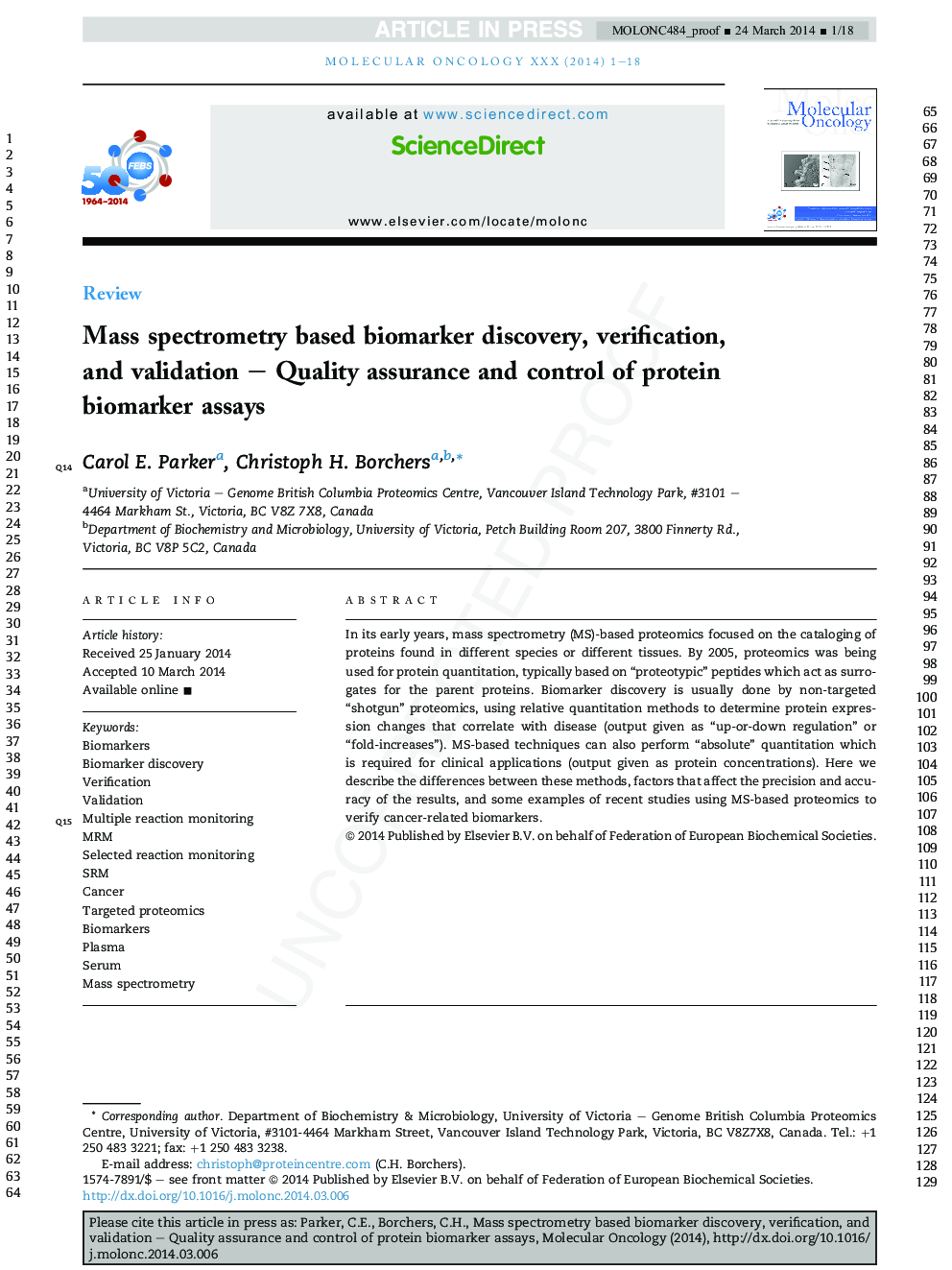| Article ID | Journal | Published Year | Pages | File Type |
|---|---|---|---|---|
| 10914594 | Molecular Oncology | 2014 | 18 Pages |
Abstract
In its early years, mass spectrometry (MS)-based proteomics focused on the cataloging of proteins found in different species or different tissues. By 2005, proteomics was being used for protein quantitation, typically based on “proteotypic” peptides which act as surrogates for the parent proteins. Biomarker discovery is usually done by non-targeted “shotgun” proteomics, using relative quantitation methods to determine protein expression changes that correlate with disease (output given as “up-or-down regulation” or “fold-increases”). MS-based techniques can also perform “absolute” quantitation which is required for clinical applications (output given as protein concentrations). Here we describe the differences between these methods, factors that affect the precision and accuracy of the results, and some examples of recent studies using MS-based proteomics to verify cancer-related biomarkers.
Keywords
Related Topics
Life Sciences
Biochemistry, Genetics and Molecular Biology
Cancer Research
Authors
Carol E. Parker, Christoph H. Borchers,
